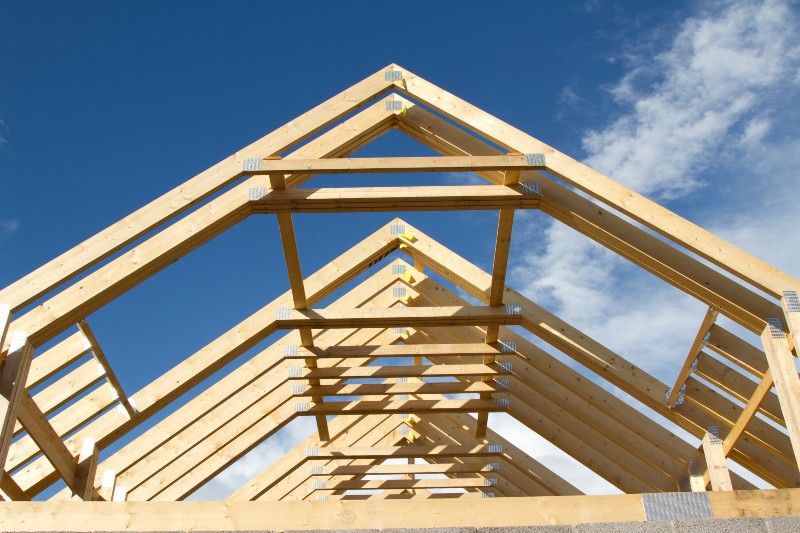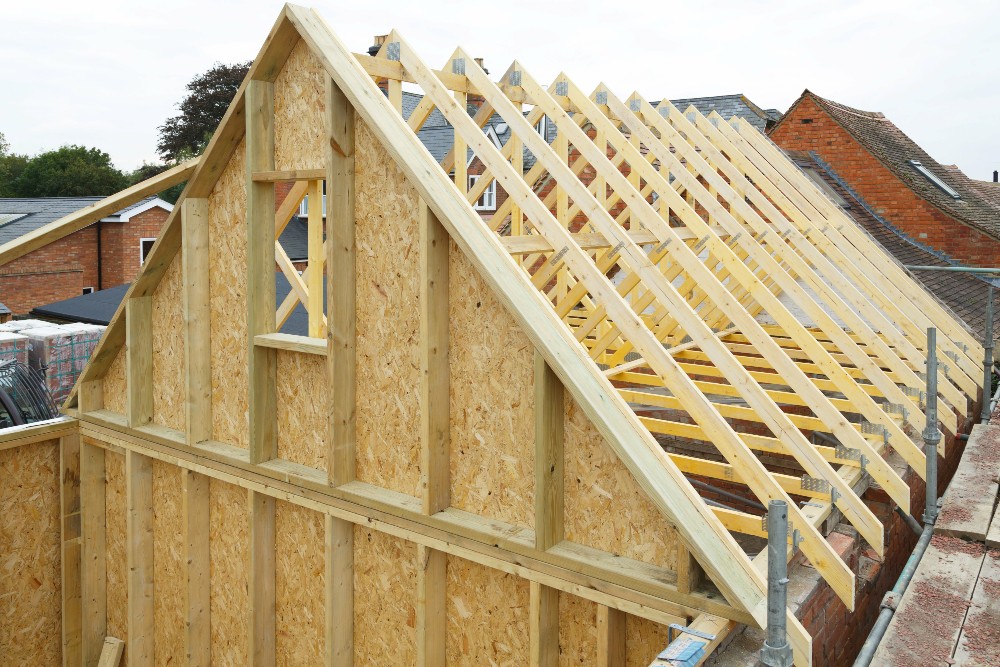A strong roof requires a strong skeleton to serve as a reliable base. Rafters and trusses are vital to ensuring the structural integrity of your home. But which one is best? Read on to learn the advantages and disadvantages of each building strategy.
Rafters vs. Trusses
The traditional means of framing a roof, rafters usually run from the hip or ridge of a roof to the wall plate of the exterior wall. They are generally laid side by side in a series, providing a base to support roof coverings, roof decks and so on.
Trusses, on the other hand, are prefabricated wooden structures that integrate a triangular sort of webbing of structural wood members to support the roof while tying the home’s exterior walls together.
Years ago, almost all homes were built using traditional rafters. These days, that’s not necessarily the case. More and more homes are being built with trusses instead of rafters, due to a variety of factors, including:
Cost
Roof trusses include smaller pieces engineered to deliver a similar strength without using as much wood. This results in a lower cost, due to greater efficiency with both labor and materials. Trusses are prefabricated in controlled manufacturing plants to ensure the highest quality output. Since many of these plants are automated, they can construct the trusses for less than it takes to build and install rafters on site.
Time Savings
Rafters take a significant amount of time to make and install at the construction site compared to trusses. Experienced roofers are usually able to install the roof trusses on an average U.S. home in only a day. Rafters, on the other hand, can take up to seven days to install.

When Are Rafters a Better Idea?
While trusses can cut down on cost and time, they aren’t always an ideal fit. One of the major advantages of using rafters is the open space they create. If you want a vaulted space, rafters can maximize the open area. Trusses can also be used to create vaulted ceilings, but they aren’t generally as efficient at opening up space compared to rafters.
Rafters are also quite useful for constructing open spaces for more living area. Again, trusses can be used to create the same types of open area but not as efficiently.
One other advantage to using rafters is improved lead times. Roof truss systems require drawings and engineering, which can take several weeks. If you have a timely project, rafters can help you get started and finish faster.
Small Projects
When a construction job is relatively small, rafters can also make a lot of sense. For instance, if you are adding a small addition to your home, it may seem excessive to go through the trouble of creating a roof truss layout and design. A garage is another good example of a smaller project where rafters make good sense.
Remote Construction
Sometimes location is a big factor in determining whether to use rafters or trusses. If your lot is located high up in the mountains, for instance, it may be hard to get roof trusses transported out to the building site. Depending on the configuration of a roof, the trusses can be very wide and quite long. Even an average-sized home will require an 18 wheeler wide load to deliver its roof trusses.
Quality
When it comes to quality, there isn’t much difference between roof trusses and rafters, as long as you are working with a reputable builder. Unless you want an exposed rafter look, the final result will be about the same either way.
With this in mind, your decision really comes down to cost. It’s generally best to price out both options to determine how much you can save by using trusses. Again, it’s important to work with a reputable, experienced contractor who can help you secure the most affordable option for your unique needs.
Need a new roof or help repairing weather-related damage? A to Z is ready to help. We’ve developed a widespread reputation as one of Colorado’s premier roofing contractors by providing reliable workmanship and attentive, honest customer service. Contact our attentive team to learn more.

